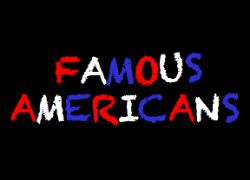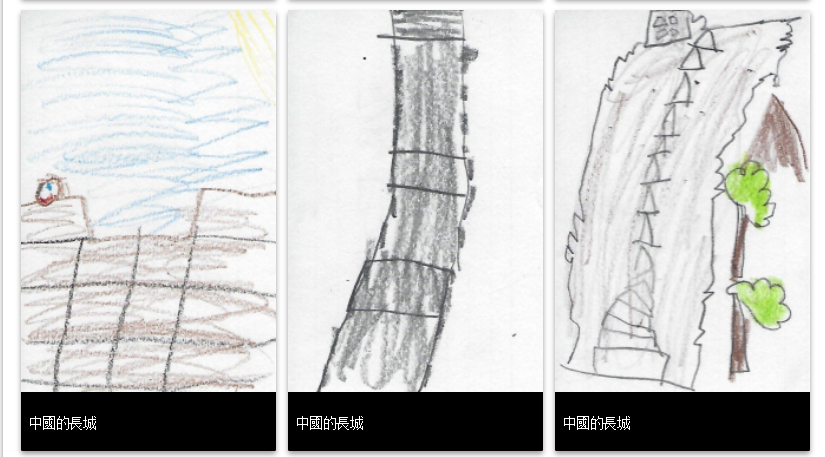Summary
Our class first met to set a purpose for studying famous Americans and decided it was important to learn more about these leaders because “if we want to grow up and be like these people,” one student Henry commented, “ then we got to know these people.” The students formed their own groups and selected a famous American to research. Students used digital tools to identify what they already knew about the famous Americans and what they wanted to learn more about. Students used a variety of sources to research their famous American. The students communicated with experts through Google Docs and Skype to verify their information and to gain further knowledge about their famous American. The students then collaborated with their peers to create visuals which they would use to make informative presentations about their famous American. The presentations were shared with a first grade class at another school through a Skype session and with friends, family, and the world on the class blog. Throughout the process, students reflected on their projects and group collaboration, and then set a plan for further improvement. Next, the students compared their famous Americans to identify what these leaders had in common. The students discovered that all eight individuals were brave, wanted to learn, and helped others. The students then voted to write and perform a play entitled “You Can Be a Leader Now” which would teach students, family, and friends that anyone can be a leader if they follow the three important steps demonstrated by the famous Americans the class studied.
TIPC Ratings
My students formed their own groups and selected the famous American they wanted to research. Students selected Primary Wall or Google Docs as a digital tool to record information they already knew about their famous American and to create questions they wanted to answer about the individual. The students used a variety of sources to study their famous American including books, websites, traveling trunks, and brochures. The students also learned more about their famous American through Skype sessions and communication with experts on their Google Doc. The experts proved to be an invaluable tool, as the students often had questions they could not find the answers to in books or on websites. Students evaluated the websites to make sure they were appropriate for their research and cited each of the sources they used. The students referred to their research when creating visuals and giving their informative presentations to their classmates, to a first grade class at another school through a Skype session, and on the class blog. In addition, the students used their research to compare the famous Americans and define what they all had in common. For example, the students explained that Abraham Lincoln was like Taylor Swift. Abraham wanted to learn more, so he taught himself to read and write. Taylor Swift also loved reading as a child and claims reading stories and writing poetry helped her to become a better singer. Through their research, the students identified that the eight famous Americans all had three things in common: they were brave, they wanted to learn more, and they helped others. Each group could cite an example from their research to support this hypothesis and they included these ideas in their student written class play entitled “You Can Be a Leader Now.”
At the beginning of the project, the students formed their own groups and selected which famous American they wanted to study. The groups then picked the digital tool they preferred for recording what they already knew about the famous American and for creating questions for their research. While studying their individual, students chose which sources they wanted to use for research. Students also had the opportunity to connect with experts through Skype or Google Docs. During one of the Skype sessions, the students were so excited to see one of Abraham Lincoln’s stovepipe hats and learned that it was made of beaver fur. The students also enjoyed communicating back and forth with the experts in the Google Docs. As more questions developed, they were able to go back and ask more. They loved discovering that they were talking with one expert all the way in England! Once the research was complete, each group created a visual way to share what they had learned. While developing their visuals, the students reflected on their group’s progress and set goals for themselves. While some groups indicated they needed to work through group conflict, others were successfully synergizing and shared the need for further supplies for their projects. The students became the teachers, as they shared their learning with a first grade class at another school and answered questions about their projects.
At the beginning of the project, each group was given the task of selecting a famous American to study. One group approached the teacher and asked to study Taylor Swift. They argued that she is both famous and an American, and that she was a leader like the other famous Americans seen on the classroom walls. The students explained that Taylor Swift goes on the stage to sing in front of large audiences just like Martin Luther King went on stage for his big speech. The teacher approved this famous American for the topic and was happy to see that the students were already drawing parallels between a present day singer and a historic American from the past. After the group research and visuals were complete, the students compared their famous Americans in a class discussion. The teacher posed the questions, “How are the famous Americans alike?” The students referred to their research and were able to identify three things the famous Americans had in common: they were brave, they wanted to learn more, and they helped others. Each group could provide evidence of how their famous American did these three things. After further discussion, the students realized they could do the same three things as the famous Americans even though they were only 6 or 7 years old. They opted to create a class play entitled “You Can Be a Leader Now” to let everyone know that they could be a leader just like the famous Americans. The students believed that this class project had already turned them into leaders because they had to be brave by going on stage in front of an audience, they had learned more from all their research, and they were going to help others by teaching them how to be a leader too.
As they were beginning the unit, the students took some time to predict what life was like for each of their famous Americans in the past. The students used checkthis.com to compare how they believed life to be long ago with their lives in the present. During this initial prediction activity, several students identified technology like television, lights, and magnets to be items that their famous Americans did not have in the past. Later, after each group researched their famous American, the students were given the task of visually showing what they had learned. The groups presented a variety of visuals including a song, a timeline, a puppet show, a quilt, and a mural amongst others. Each group was able to show what they knew in a unique way. Some groups chose to incorporate technology by typing in Pixie on the computer, printing pictures, or recording in Photo Booth. Other groups painted, built using recyclable materials, or sewed items together with yarn. After the visual presentations, the students came together as a class to compare their famous Americans. The students voted to write their own play. They defined what committees would be needed for the play to be a success, and the students each found a way to be a part of the play. Students designed their own invitations, created their own costumes, and used Pixie to create their own program for the play. As several of the students had been in a school play in the past, they referred to past experiences to help them identify what needed to be done for the performance.
Download Files
7160-FirstGradersLeadingWay>
Contents:
- Lesson Plan
- Student Artifacts
- Rubric
- Class Blog






